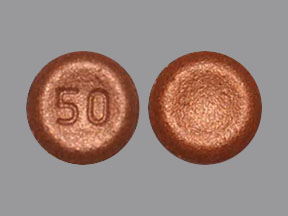Safinamide and Alcohol/Food Interactions
There are 3 alcohol/food/lifestyle interactions with safinamide.
Alcohol (Ethanol) Safinamide
Moderate Drug Interaction
GENERALLY AVOID: Alcohol may potentiate some of the pharmacologic effects of central nervous system (CNS)-active agents. Use in combination may result in additive CNS depression and/or impairment of judgment, thinking, and psychomotor skills.
MANAGEMENT: Patients receiving CNS-active agents should be advised to avoid or limit consumption of alcohol. Ambulatory patients should be counseled against driving, operating machinery, or engaging in potentially hazardous activities requiring mental alertness and motor coordination until they know how these agents affect them, and to notify their physician if they experience excessive or prolonged CNS effects that interfere with their normal activities.
References
- Warrington SJ, Ankier SI, Turner P (1986) "Evaluation of possible interactions between ethanol and trazodone or amitriptyline." Neuropsychobiology, 15, p. 31-7
- Gilman AG, eds., Nies AS, Rall TW, Taylor P (1990) "Goodman and Gilman's the Pharmacological Basis of Therapeutics." New York, NY: Pergamon Press Inc.
- Cerner Multum, Inc. "UK Summary of Product Characteristics."
- (2012) "Product Information. Fycompa (perampanel)." Eisai Inc
- (2015) "Product Information. Rexulti (brexpiprazole)." Otsuka American Pharmaceuticals Inc
Safinamide Food
Moderate Food Interaction
GENERALLY AVOID: Foods that contain large amounts of tyramine may precipitate a hypertensive crisis in patients treated with safinamide. The proposed mechanism involves potentiation of the tyramine pressor effect due to inhibition of monoamine oxidase (MAO) by safinamide. Monoamine oxidase in the gastrointestinal tract and liver, primarily type A (MAO-A), is the enzyme responsible for metabolizing exogenous amines such as tyramine and preventing them from being absorbed intact. Once absorbed, tyramine is metabolized to octopamine, a substance that is believed to displace norepinephrine from storage granules causing a rise in blood pressure. In vitro, safinamide inhibits MAO-B with greater than 1000-fold selectivity over MAO-A, and neither safinamide nor its major metabolites inhibit MAO-A at clinically relevant concentrations. Results from an oral tyramine challenge study also suggest that safinamide is a selective inhibitor of MAO-B at the recommended dosages of 50 or 100 mg/day. However, this selectivity is not absolute and may diminish in a dose-related manner above the maximum recommended daily dosage. In clinical trials, the incidence of hypertension was 7% and 5% for safinamide 50 mg and 100 mg, respectively, versus 4% for placebo. There were no reported cases of hypertensive crisis.
Administration of safinamide following intake of a high-fat, high-caloric breakfast resulted in a slight delay in the absorption of safinamide, but had no effects on safinamide peak plasma concentration (Cmax) and systemic exposure (AUC) compared to administration under fasted conditions.
MANAGEMENT: Dietary restriction is not ordinarily required during safinamide treatment with respect to most foods and beverages that contain tyramine, which usually include aged, fermented, cured, smoked, or pickled foods (e.g., air-dried and fermented meats or fish, aged cheeses, most soybean products, yeast extracts, red wine, beer, sauerkraut). However, certain foods like some of the aged cheeses (e.g., Boursault, Liederkrantz, Mycella, Stilton) and pickled herring may contain very high amounts of tyramine and could potentially cause a hypertensive reaction in patients taking safinamide, even at recommended dosages, due to increased sensitivity to tyramine. Patients should be advised to avoid the intake of very high levels of tyramine (e.g., greater than 150 mg) and to promptly seek medical attention if they experience potential signs and symptoms of a hypertensive crisis such as severe headache, visual disturbances, confusion, stupor, seizures, chest pain, unexplained nausea or vomiting, and stroke-like symptoms. Blood pressure should be regularly monitored and managed accordingly. Medication adjustment may be necessary if blood pressure elevations are sustained or not adequately controlled. Safinamide should not be used at dosages exceeding 100 mg/day, or 50 mg/day in patients with moderate hepatic impairment (Child-Pugh B, 7-9), as it may increase the risk of hypertensive crisis and other adverse reactions associated with nonselective inhibition of MAO. Safinamide can be administered with or without food.
References
- (2023) "Product Information. Xadago (safinamide)." US WorldMeds LLC
- (2020) "Product Information. Onstryv (safinamide)." Valeo Pharma
- (2022) "Product Information. Xadago (safinamide)." Seqirus Pty Ltd
- (2021) "Product Information. Xadago (safinamide)." Zambon UK Ltd
Safinamide High Blood Pressure (Hypertension)
Moderate Potential Hazard, Moderate plausibility
safinamide - hypertension
Safinamide may cause hypertension or exacerbate existing hypertension. Patients should be monitored for new onset hypertension or hypertension that is not adequately controlled after starting treatment. Dosage adjustment may be necessary if elevation of blood pressure is sustained.
References
- (2017) "Product Information. Xadago (safinamide)." US WorldMeds LLC
Safinamide drug interactions
There are 481 drug interactions with safinamide.
Safinamide disease interactions
There are 5 disease interactions with safinamide which include:
More about safinamide
- safinamide consumer information
- Check interactions
- Compare alternatives
- Reviews (4)
- Side effects
- Dosage information
- During pregnancy
- Drug class: dopaminergic antiparkinsonism agents
- Breastfeeding
- En español
Related treatment guides
Drug Interaction Classification
| Highly clinically significant. Avoid combinations; the risk of the interaction outweighs the benefit. | |
| Moderately clinically significant. Usually avoid combinations; use it only under special circumstances. | |
| Minimally clinically significant. Minimize risk; assess risk and consider an alternative drug, take steps to circumvent the interaction risk and/or institute a monitoring plan. | |
| No interaction information available. |
Further information
Always consult your healthcare provider to ensure the information displayed on this page applies to your personal circumstances.


